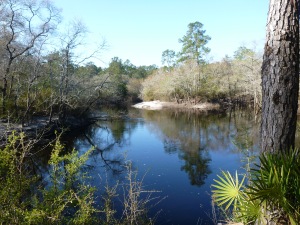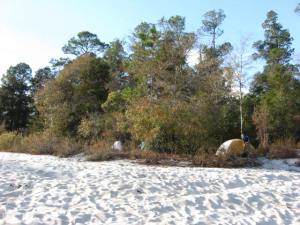This can be viewed also on http://www.dep.state.fl.us/lands/AcqHistory.htm. Authors James A Farr and O Greg Brock are with the Florida Division of State Lands.
We will now explain the process by which lands are chosen for purchase under the Florida Forever Program and how the lands are actually purchased. This process has remained basically unchanged since the inception of the CARL program in 1979, although there have been a few substantive changes that we will explain below. We will also introduce our land management planning process.
From 1979 – 1990, the CARL program had one selection cycle per year. We increased this to twice per year under Florida Forever. Anyone may submit an application to ARC to have a project considered for acquisition. We have routinely received applications from private landowners, real estate agents and other representatives, state and federal agencies, local governments water management districts and conservation groups. The application form and various support materials are available online at http://www.floridaforever.org. it is very important to note that our program depends on landowners who are willing to have their property considered for purchase by the state. Prior to an application being submitted, all landowners must be contacted by the applicant, and an owner’s property must be removed from a project boundary if the owner requests it.
After the application deadlines of January 1 and July 1 of each year, all submittals are distributed to the nine ARC members and to the Florida Natural Areas Inventory (FNAI). FNAI is our state natural heritage program, part of a nationwide Heritage Network that gathers and organizes information relating to the biodiversity of each state (Stein et al., 2000). FNAI provides initial resource information from their databases for each of the new projects. Based on the application materials, FNAI data, and, very importantly, a public hearing with input from citizens, environmental groups, project sponsors and others, ARC members perform an initial evaluation of each new project. It a minimum of five members vote in a public meeting to move the project forward, it then moves to a more detailed evaluation.
The Florida Natural Areas Inventory has developed an iterative modeling tool called F-TRAC (Florida Forever Tool for Efficient Resource Acquisition and Conservation) for identifying projects that contribute the most toward satisfying our conservation needs (Oetting et al., 2006). The model incorporates species, natural communities, high quality watersheds, wetlands and sustainable forestry. It is run every six months in conjunction with each new application cycle and takes into account land currently in public ownership, land in existing projects, and lands proposed for acquisition. Because it evaluates unprotected land in relation to land that we already own, the relative importance of unbought parcels may change as new land is purchased and resources that were underrepresented in our inventory become better protected through public ownership.
The Florida Natural Areas Inventory plays a critical role in the next steps of project development. After a project passes the initial vote, FNAI staff recommend a project Resource Planning Boundary that may vary from the boundaries proposed in the initial application. Property may be added to the Resource Planning Boundary if there are tracts with significant natural resources adjacent to the original proposal or if it makes sense to include entire ownerships when only partial ownerships were proposed. They may also delete areas with known disturbances of development or even recommend that only a part of an ownership be pursued.
After the Resource Planning Boundaries are determined, FNAI and agency staff perform site visits and write a detailed evaluation of the project. The project evaluations contain descriptions of the vegetative communities, listed species found on the property, description of groundwater and surface water resources, historical and archaeological resources, recreation potential, a proposed management concept and suggested managing agency, and recommendations regarding phasing and whether all or part of the project would be appropriate for a conservation easement or should be bought outright.
The completed project evaluations are distributed to the ARC members, who then hold a second public hearing on the projects before a second vote to approve the projects to an acquisition list. Those projects that receive at least five affirmative votes are then voted onto either an “A” or “B” list. “A” list projects are those considered most important for acquisition and may be pursued by the acquisition staff of the DEP Division of State Lands. “B” list projects are a lower priority and may only be worked on if the state can pay no more than 50% of appraised value. To be purchased, these projects typically require matching funds from a local government or water management district partner. The cost to purchase all of the projects on our acquisition lists has always substantially exceeded our acquisition budget, so some sort of prioritization is essential.
The separation of projects into two list, basically high and low priority, is a new phenomenon under Florida Forever. Under the CARL program, from its inception through the end of Preservation 2000, we ranked projects from highest to lowest priority and developed acquisition work plans based on the relative ranking of individual projects. There was much more certainty about which projects would be worked on inn any given fiscal year, but less of an opportunity to respond to changes in landowner willingness to sell, imminent threat of development, and other contingencies unforeseen at the time of ranking. Each method has its advantages. With a formal ranking of the projects from highest to lowest priority, the Council had more of a direct input into acquisition priorities. By lumping projects into just two groups, within which all projects are equal, acquisition priorities are determined to a much greater extent by staff of the Division of State Lands. Ranking reduces the ability to exert political or interest-group influence on which projects are pursued.
We should note that a project may range from a tiny site of less than ten acres (e.g. to protect a historical site like the Key West Customs House or a localized natural resource like a Southeastern Bat maternity cave) to one more than 200,000 acres (e.g. the Tate’s Hell Swamp in Franklin County). They may have one or a few landowners, as is the usual case, to more than 20,000 owners, as was the case in our Save Our Everglades project, which included thousands of individual platted lots in the Southern Golden Gate Estates. Projects are not necessarily designed to be completed in a single year, and some larger projects may take more than two decades to complete (e.g. a large landscape project in the Wekiva River basin in Orange, Seminole and Lake counties, or the Save Our Everglades projects). We are not always successful in negotiating purchases of lands that we consider important, but by maintaining essential parcels on our acquisition list, we are able to respond if an owner’s willingness to sell changes or the ownership itself changes. If a parcel within a project is lost to development, we can reevaluate out priorities within a project to determine if the project is still worth pursuing or if priorities within the project need to be adjusted.
The final step in creating the acquisition lists is approval of the final “A” and “B” groupings by our Governor and Cabinet. As with the CARL program, the Cabinet may approve or reject the list or remove individual projects, but it may not remove projects from “A” to “B” or vice versa. The lists are submitted in the form of an Annual Report and Interim Report, both of which include project summaries, purposes of acquisition, management concepts, and other pertinent information. By approving the report, the Governor and Cabinet approve both the groupings of projects into two list as well as the rationale for their inclusion as acquisition projects and the determination of how they will be managed.










